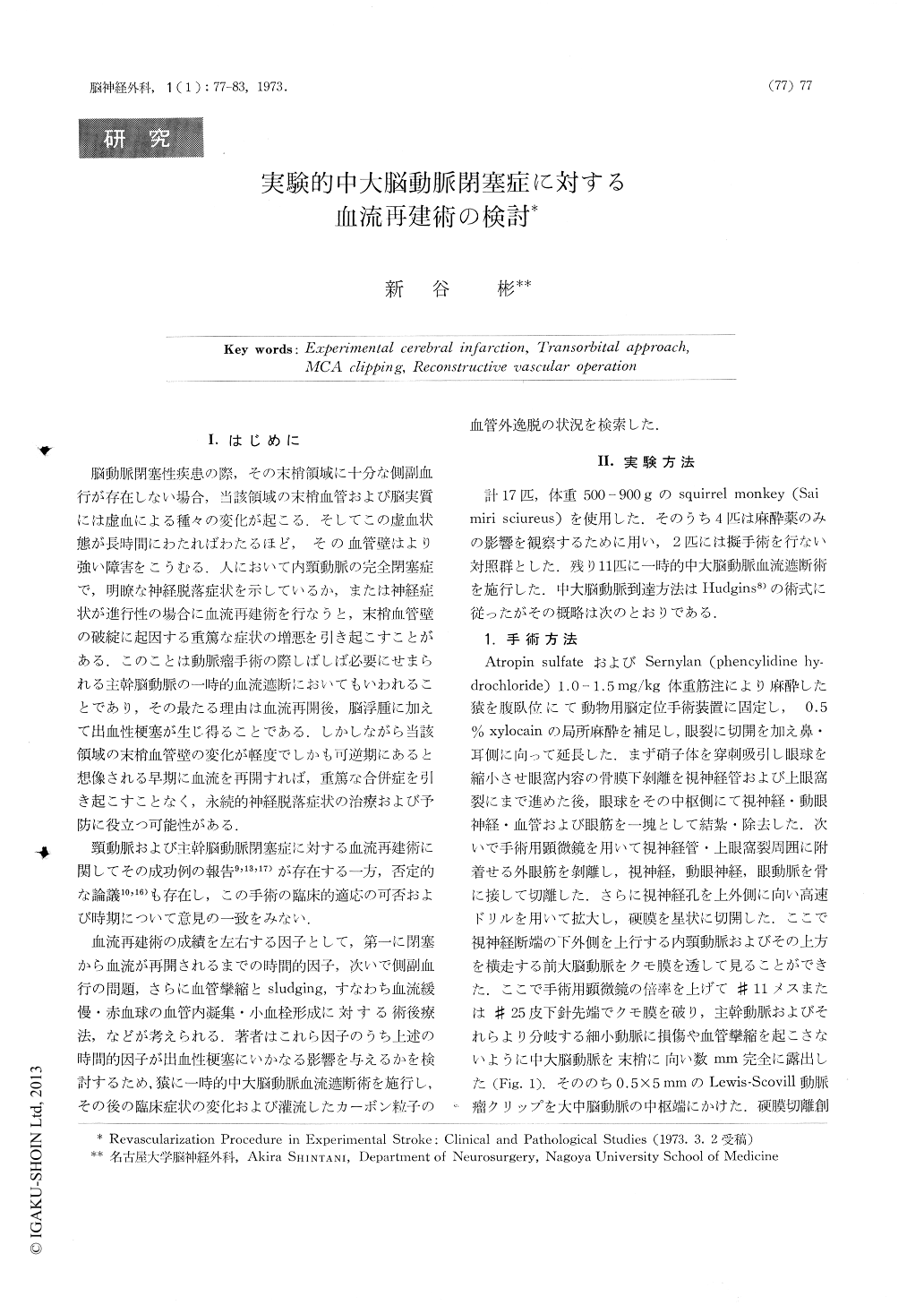Japanese
English
- 有料閲覧
- Abstract 文献概要
- 1ページ目 Look Inside
脳動脈閉塞性疾患の際,その末梢領域に十分な側副血行が存在しない場合,当該領域の末梢血管および脳実質には虚血による種々の変化が起こる.そしてこの虚血状態が長時間にわたればわたるほど,その血管壁はより強い障害をこうむる.人において内頸動脈の完全閉塞症で,明瞭な神経脱落症状を示しているか,または神経症状が進行性の場合に血流再建術を行なうと,末梢血管壁の破綻に起因する重篤な症状の増悪を引き起こすことがある.このことは動脈瘤手術の際しばしば必要にせまられる主幹脳動脈の一時的血流遮断においてもいわれることであり,その最たる理由は血流再開後,脳浮腫に加えて出血性梗塞が生じ得ることである.しかしながら当該領域の末梢血管壁の変化が軽度でしかも可逆期にあると想像される早期に血流を再開すれば,重篤な合併症を引き起こすことなく,永続的神経脱落症状の治療および予防に役立つ可能性がある.
頸動脈および主幹脳動脈閉塞症に対する血流再建術に関してその成功例の報告9,13,17)が存在する一方,否定的な論議10,16)も存在し,この手術の臨床的適応の可否および時期について意見の一致をみない.
The middle cerebral artery was exposed in squirrel monkeys using a transorbital microsurgical technique.
In nine monkeys a temporary clip was placed at the origin of the middle cerebral artery to occlude blood flow for a period of one to four hours. Six hours after removal of the clip the monkeys were sacrificed with an overdose of pentobarbital, and the brain was perfused with biological carbon/saline solution and glutaraldehyde which was infused into the most distal stream of the carbon solution at a rate of 5% using a Harvard infusion pump.

Copyright © 1973, Igaku-Shoin Ltd. All rights reserved.


